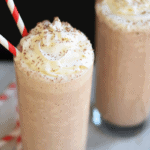What’s the best way to make pizza? A wood-fired oven at 800 degrees Fahrenheit. The insanely high heat cooks the pie in less than two minutes, producing the blistered and perfectly crispy crust that makes pizza so good.
The difference is not just the temperature of the oven, but also the baking surface itself-the “floor” of the oven. A hot oven floor bakes a crispy crust, and a hot oven floor creates a hot oven. The bottom heat also radiates upward through the pizza, so the cheese and other toppings are cooked by both the heat from above and the heat from beneath.
It’s all well and good, but we home cooks don’t have wood-fired ovens in our kitchens. Does that mean you should stop making homemade pizza? Absolutely not! There is an easy and inexpensive tool that can help you recreate the conditions of a wood-fired oven in your regular kitchen oven: a pizza stone.
What Is A Pizza Stone?
Pizza stones are flat slabs of stone or ceramic that sit inside your oven, where they absorb heat and keep it warm. Since the unbaked pizza dough rests directly on it, the hot stone transmits its heat to the bottom of the crust, just like the floor of a wood-fired oven.
A pizza stone is a subset of what is known broadly as a baking stone. Generally speaking, a pizza stone would probably be round, while a baking stone would likely be rectangular. Pizza stones and baking stones are similar in function, but not all pizza stones are baking stones. However, you can certainly use a rectangular baking stone for pizza
Various thicknesses are available, and thicker ones are more durable and work better, but are more expensive and take longer to heat up. We also have compiled a guide that will help you choose the best pizza stone for oven.
How the Pizza Stone Works
It is primarily a heat transmission device for the dough below the pizza stone. Some people say that a pizza stone produces a crispy bottom because its porous surface “absorbs moisture,” but that’s not quite true. When dough is heated to 500 degrees Fahrenheit, it is not absorbing any moisture because liquids are rapidly converted into steam and evaporated.
Porousness does become a factor when you consider that a pizza stone’s tiny cracks and crevices allow evaporating steam to escape more efficiently than a metal baking pan. Metals with ultrasmooth surfaces tend to trap moisture, leading to a soggy crust rather than a crispy one.
However, most pizza stones work because they get very hot.
How to Use a Pizza Stone
Follow these steps to bake pizza on a pizza stone:
- Put your pizza stone in a cold oven.
- Preheat the oven to 500 degrees Fahrenheit. The stone also heats up once the oven is preheated.
- Place the pizza on the stone.
- You should bake the cheese until it is lightly browned.
- Turn off the oven and remove the pizza.
- Brush the stone after it has cooled, do not wash it.
How to Care for Your Pizza Stone
Different manufacturers will offer different guidelines, but in general, you want to keep it dry and store it in the oven.
When pizza stones experience sudden temperature changes (such as from a hot oven to a cold countertop), they are susceptible to what’s called “thermal shock.” Also, adding a cold stone to a hot oven can cause it to crack. (Cooking a frozen pizza on a pizza stone is also a no-no.) So the obvious solution is to never take it out of the oven.
Although this might seem extreme, if you bake enough pizzas to need a pizza stone in the first place, it makes sense.
The advantage of keeping your pizza stone in your oven is that it will even out the oven’s heat, minimizing so-called “hot spots.” The disadvantage is that it will take longer to preheat your oven while keeping it in your oven.
You have to keep it somewhere. If you leave it in the oven, you won’t have to worry about sudden temperature changes; you won’t be tempted to wash it; and if you never move it, there’s no chance you’ll drop it.
After all, dropping a pizza stone on your toe is not only bad for the pizza stone.
Was this helpful?
Hi there! I’m a food enthusiast and journalist, and I have a real passion for food that goes beyond the kitchen. I love my dream job and I’m lucky enough to be able to share my knowledge with readers of several large media outlets. My specialty is writing engaging food-related content, and I take pride in being able to connect with my audience. I’m known for my creativity in the kitchen, and I’m confident that I can be the perfect guide for anyone looking to take their culinary journey to the next level.








